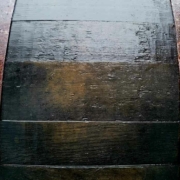Of Sulfites and Mead: A Spirited Dialogue on a Misunderstood Preservative
Reading time: 3 minutes
Ever wonder about the “Contains Sulfites” label on your mead or wine? Let’s dive into the world of these essential preservatives and debunk some myths. Join me in exploring the intriguing role of sulfites and keeping your favorite drink perfect.
As the evenings get cooler, there’s nothing quite like curling up with a glass of your favorite mead (or wine). I love a good label, so I’m likely to examine every little bit of it while sipping my delicious libation. Inevitably, that innocuous message “Contains Sulfites” usually appears on the back.
This message doesn’t sound any alarm bells for me, but I’ve often heard others blame them for the infamous wine headache, so I thought I’d dig a little deeper.
Sulfites are an often misunderstood part of the fermentation world. They play a crucial role in keeping our favorite libation fresh and flavorful from the hive or vine all the way to the glass. Let’s uncork this mystery and perhaps quell any fears about these compounds.
What Are Sulfites Anyway?
Sulfites, or SO2 in winemaking parlance, are preservative compounds used in winemaking to inhibit harmful bacteria and prevent oxidation. These compounds are both a naturally occurring byproduct of fermentation and an additive. Sulfites have been intertwined with the art of fermentation since Roman times. The ancient Romans observed that burning sulfur candles inside the amphorae would help keep the wine from turning to vinegar.
Sulfites continue to play a crucial role, acting as antioxidant and antimicrobial agents. They safeguard against unwanted bacteria and yeast, ensuring that the mead or wine remains unspoiled as it makes its way from fermentation to our glass. This is especially important in mead, where microbial mischief can easily overshadow the delicate flavors.
Sulfites Labeling Lore
The label “Contains Sulfites,” generally in all caps, may sound alarm bells for some. It should be seen as a declaration rather than a warning per se. In the United States, this label must appear on any wine containing more than ten parts per million (ppm) of sulfites. The label “no added sulfites” does not mean no sulfites; remember, it’s a natural part of fermentation.
In the United States, the maximum allowed by law is 350 ppm, with an average of about 50 ppm in commercially made meads and wines. Even the highest amount allowed by law is less than you’ll find in many foods ranging from French fries to dried fruit and most processed foods.
The Sulfite Scale
The quantity of sulfites in mead or wine varies based on factors like acidity, color, and sugar content. Interestingly, red wines often require fewer sulfites than their white counterparts, defying the common myth linking red wine to higher sulfite content. Meads vary according to the style or what has been added beyond honey.
Breaking Down the Sulfite Scare
The sulfite sensitivity scare chiefly concerns a very small percentage of the population, particularly those with severe asthma. Research points towards other compounds like biogenic amines (such as histamines) being the more likely culprits behind the infamous wine headaches rather than sulfites.
Some mead makers pride themselves on skipping sulfites. However, like wine, mead too can benefit from the protective shield of sulfites, especially when battling spoilage villains like bacteria and oxidation.
Managing sulfite levels in mead is a blend of art and science. Ensuring a balanced sulfite level not only secures the longevity of your beverage but also keeps undesirable odors and flavors at bay.
With a deeper understanding of sulfites, we hope to swap the sulfite skepticism for a toast to the meticulous craftsmanship that goes into each bottle of mead (or wine).




 Glenda Downs
Glenda Downs